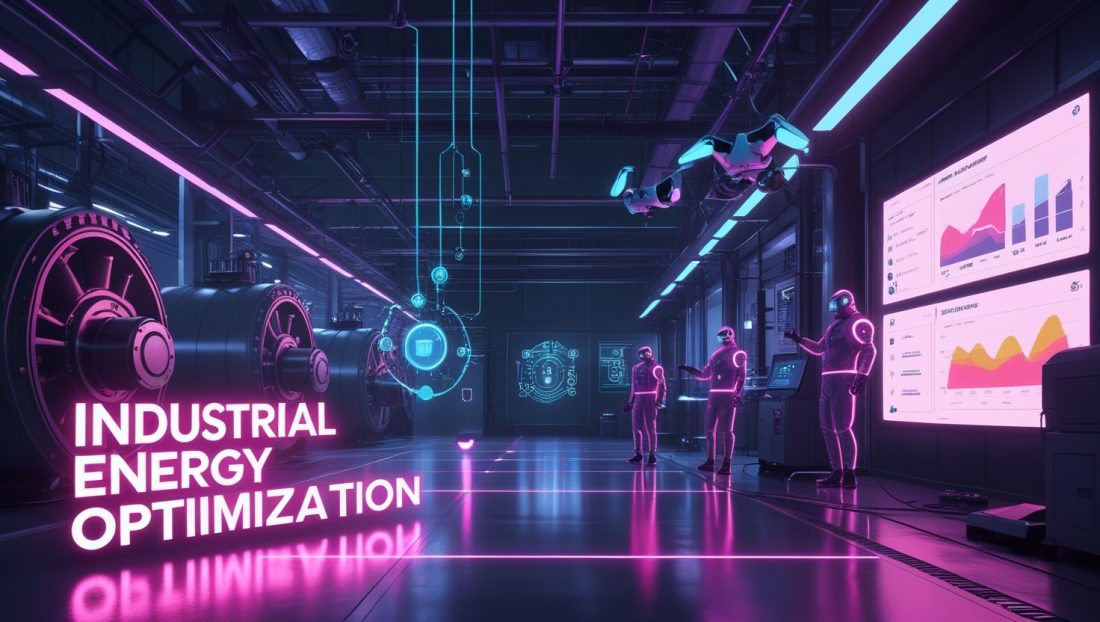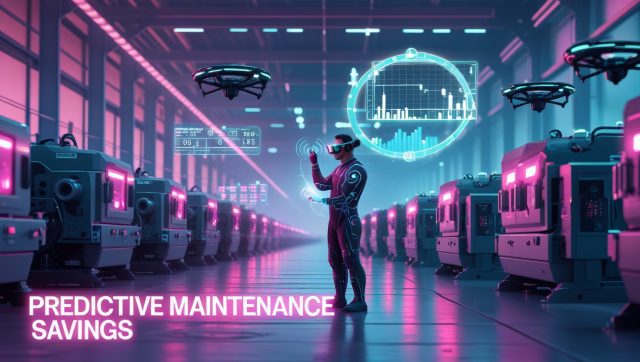Why do factories pay $48,000 monthly for electricity they never use?
Industrial motors silently drain 45% of global electricity (IEA), yet most facilities operate blind to energy waste. Siemens Energy’s U.S. transformer factory proved this isn’t inevitable: $880,000 in annual savings per facility using AI-driven monitoring. This is industrial energy optimization in 2025—no theory, just results.
1. The $200 Billion Industrial Energy Crisis
Industrial motors consume nearly half the world’s electricity, but inefficiencies hide in plain sight:
- Phantom loads from idling machinery cost automotive plants $48,000 monthly
- Peak demand penalties inflate bills by 20% during equipment surges
- Undetected motor wear increases energy draw 17% before failure symptoms appear
Maria Torres, Plant Manager at a Midwestern chemical facility, witnessed this firsthand: “Our ‘efficient’ HVAC drew power 24/7 for empty labs. Smart plugs revealed $12,000/month in invisible waste.”
To understand how predictive technologies can preempt these losses, explore how AI boosts predictive maintenance ROI in 2025, showcasing real-world applications that align maintenance with energy efficiency.
2. Smart Plugs: Industrial Energy X-Rays
Modern industrial smart plugs like Schneider Electric’s EcoStruxure are diagnostic tools, not simple switches. They capture:
- Millisecond voltage sags during motor startups
- Harmonic distortions damaging equipment
- Phase imbalances costing $18/kW in wasted capacity
Cement Plant Case Study (Nevada, 2024):
After installing 240 smart plugs on conveyor motors and kilns, machine learning algorithms identified:
| Equipment | Energy Use (Pre) | Energy Use (Post) | Annual Savings |
|---|---|---|---|
| Kiln #3 | 2.4 MW/day | 1.9 MW/day | $216,000 |
| Conveyor Array | 1.1 MW/day | 0.8 MW/day | $98,000 |
| HVAC | 0.7 MW/day | 0.4 MW/day | $72,000 |
| Total savings: $386,000 (31% reduction) in Year 1. |
For deeper insights into how IoT devices enhance such outcomes, check out top 7 industrial IoT platforms for smart factories, which compares platforms driving similar energy-saving transformations.
3. AI: The Brain Behind Industrial Energy Transformation
Raw data means nothing without interpretation. Platforms like Grid4C’s SaaS deploy physics-informed machine learning to:
- Predict motor failures 14 days early by linking power anomalies to maintenance logs
- Optimize equipment sequencing to avoid peak tariffs (e.g., staggering compressor startups)
- Simulate retrofit ROI modeling VFD vs. motor replacement outcomes
Schneider Electric’s implementation in semiconductor fabs reduced energy use 10% and carbon emissions 40%—with payback in under 6 months. To see how AI-driven agents further optimize energy costs, read how industrial AI agents slash energy costs in manufacturing 2025.
For a broader perspective on AI’s role in industrial optimization, Energy Star’s Industrial Energy Management Guide offers practical steps for integrating smart technologies into existing systems.
4. 2025’s Top Industrial Energy Optimization Tools
Cut through marketing hype with field-tested solutions:
| Product | Core Strength | ROI Timeline |
|---|---|---|
| EcoStruxure Smart Plugs | Real-time phase balancing (500A rating) | 3-5 months |
| Emporia Vue Gen 3 | 48-circuit monitoring + TOU analytics | 4 months |
| Sense Industrial | Appliance-level energy fingerprinting | 6 months |
| Schneider Predictive AI | Automated setpoint optimization | 2 months |
| EnergyCAP Enterprise | GHG tracking + utility bill auditing | Immediate |
Source: 2025 Industrial Energy Tech Benchmark Report
5. Implementation Roadmap: Avoid These Critical Errors
Error 1: Sensor Placement Mistakes
Clamping current transformers only on Phase A skews readings by 22%. Solution: Triangulate all three phases. “Precision requires holistic measurement.”
— Luis Gomes, Industrial IoT Researcher, MIT
Error 2: Data Overload Without Action
Siemens Energy’s transformer factory trained engineers on Priority Alerts—only flagging anomalies costing >$500 daily. Error
3: Ignoring Thermal Patterns
A Pittsburgh steel mill used AI to correlate Tuesday energy spikes with induction furnace preheating. Rescheduling saved $7,200 weekly. To learn how AI-driven analytics tackle similar inefficiencies, visit Rockwell Automation’s AI Energy Solutions for case studies on thermal and load optimization.
6. Siemens’ $880,000 Savings Blueprint
Siemens Energy’s U.S. transformer facility achieved landmark savings through:
- Strategic Smart Plug Deployment: 320 devices on motors >50 HP
- AI-Driven Load Shifting: Moving non-critical operations off-peak
- Predictive Maintenance: Fixing motors before efficiency dropped
Results:
- 28% reduction in energy consumption
- 19% lower maintenance costs
- ROI in 11 weeks
7. The Future: Next-Gen Industrial Energy Optimization
Generative AI Setpoint Optimization (Projected 2026):
“Facilities managers will query: ‘Simulate optimal chiller settings for 90°F tomorrow’—and get actionable steps.”
— Sanjeev Verma, Energy Informatics Lead, Stanford
Blockchain-Verified Carbon Credits (Pilot Phase):
Reductions from verified energy savings traded transparently. Autonomous Grid Negotiation (Testing):
AI systems selling demand flexibility to utilities during shortages.
8. Efficiency = Competitive Immunity
Siemens Energy’s Q4 2024 results proved: Plants using these tools grew profits 3x faster despite supply chain disruptions. This transcends cost-cutting—it’s operational resilience.
Immediate Action Step:
Audit one high-load process with a smart plug this week. Schneider’s data shows 87% of facilities find >15% savings within 3 hours. “We no longer fear utility bills—our AI forecasts them and slashes them.”
— Anika Patel, Director of Sustainability, Titan Manufacturing
FAQ: Industrial Energy Optimization
Can small factories afford these systems?
Yes. Entry-level smart plugs start at $150/sensor. Mid-sized facilities typically achieve ROI in <6 months.
How accurate are AI energy savings predictions?
Leading platforms like Grid4C achieve 92-97% accuracy in field trials (DOE 2024 study).
Is retrofitting older motors worthwhile?
Absolutely. A 2025 McKinsey analysis shows retrofits cut energy use 15-30% on motors >10 years old.
What’s the biggest implementation hurdle?
Data integration. Prioritize tools with API compatibility like EcoStruxure.
Your Next Step
[Download the Industrial Energy Optimization Toolkit] (Coming Soon!)
Includes:
- Smart plug implementation checklist
- Vendor comparison matrix
- ROI calculator
Subscribe to our Newsletter for Updates
Get monthly case studies and tech briefs on industrial energy efficiency. “The cheapest energy is the unit you never use.”



